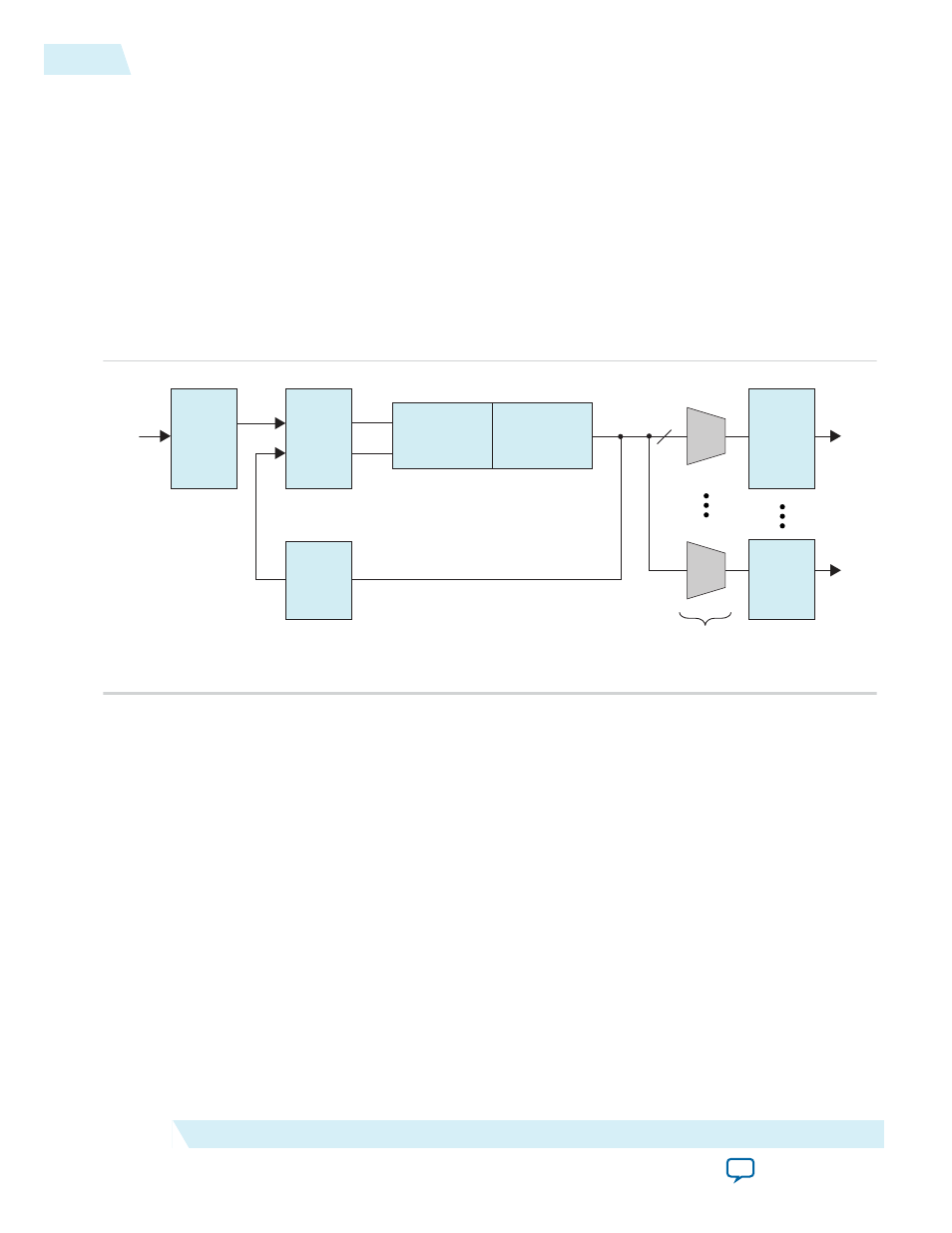Building blocks of a pll – Altera Phase-Locked Loop User Manual
Page 8

(lock) on the frequency of the input or reference signal. The synchronization or negative feedback loop of
the system forces the PLL to be phase-locked.
You can configure PLLs as frequency multipliers, dividers, demodulators, tracking generators, or clock
recovery circuits. You can use PLLs to generate stable frequencies, recover signals from a noisy communi‐
cation channel, or distribute clock signals throughout your design.
Building Blocks of a PLL
The main blocks of the PLL are the phase frequency detector (PFD), charge pump, loop filter, VCO, and
counters, such as a feedback counter (
M
), a pre-scale counter (
N
), and post-scale counters (
C
). The PLL
architecture depends on the device you use in your design.
Figure 1: Typical PLL Architecture
F
IN
F
FB
F
REF
Up
Down
F
VCO
Pre-scale
Counter
(N)
# of
output
clocks
Phase
Frequency
Detector
(PFD)
Charge Pump
Loop Filter
and VCO
Feedback
Counter
(M)
Post-scale
Counter
(C)
Post-scale
Counter
(C)
VCO Phase Selection
at Each PLL Output Port
The following terms are commonly used to describe the behavior of a PLL:
• PLL lock time—also known as the PLL acquisition time. PLL lock time is the time for the PLL to attain
the target frequency and phase relationship after power-up, after a programmed output frequency
change, or after a PLL reset.
Note: Simulation software does not model a realistic PLL lock time. Simulation shows an unrealisti‐
cally fast lock time. For the actual lock time specification, refer to the device datasheet.
• PLL resolution—the minimum frequency increment value of a PLL VCO. The number of bits in the
M
and
N
counters determine the PLL resolution value.
• PLL sample rate—the F
REF
sampling frequency required to perform the phase and frequency
correction in the PLL. The PLL sample rate is f
REF
/
N
.
Related Information
Provides more information about the PLL building blocks.
8
Building Blocks of a PLL
UG-01087
2015.05.04
Altera Corporation
Altera Phase-Locked Loop (Altera PLL) IP Core User Guide
